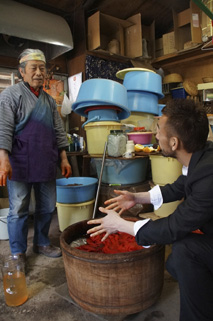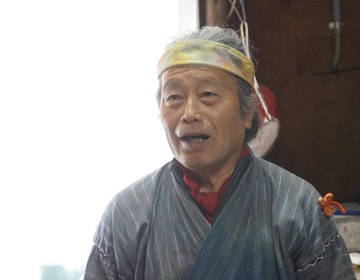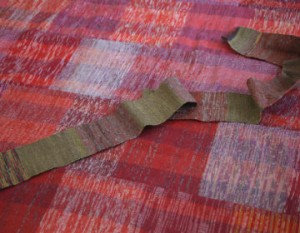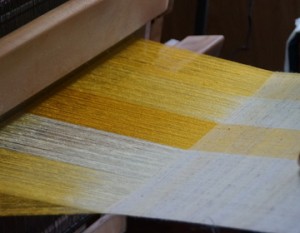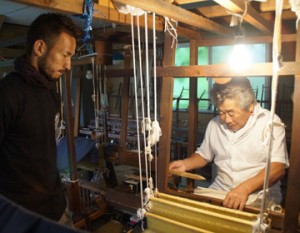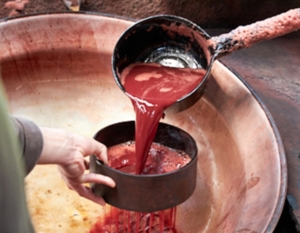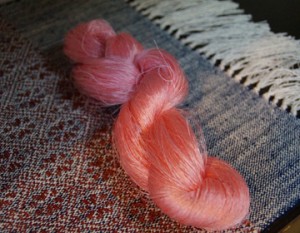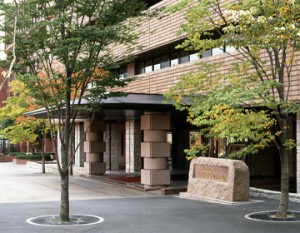The relationship between safflower and Yamagata
Yamagata and Safflower are deeply related . Every July, they hold the Safflower festival in Yamagata, Yamagata Prefecture, and the national sports competition held in 1992 was dubbed the Benibana (safflower) Games. Safflowers originated in Egypt. It got to Japan in about the 4th century through the Silk Road. Then they gradually spread throughout Japan, and by the Azuchi- Momoyama period, they came to be valued for dyeing along with indigo, madder and gromwell root.
It is said that it was around that time when they started to be widely grown in Yamagata. By the Edo period, they were being grown in areas long the Mogami River, and Yamagata became a major production site for safflower. According to one source, safflower output during the Kyoho era (early 18th century) exceeded 40% of the national safflower production.
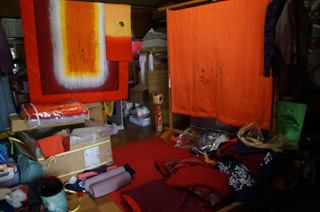
“Benimochi”, used in lipstick
”The weather has to be hot in the summer, cold in the winter, and hot and humid during the rainy season to early summer. That kind of climate is needed for good flowers to bloom.” the dyeing artist Takao Suzuki told us. He was born to a family of dyers, and was trained in places like Kyoto when he was young. After coming back to Yamagata, he established himself in the dyeing business, but when the Benibana Games were held, he was requested by the regional government of Kahoku to revive safflower dyeing and started his research in the field.
At the time, the amount of the raw material safflower was very limited. And, in order to get a brilliant red color, plain dried safflower did not work. Something called “benimochi” had to be made, and that in itself was major work. You have to add water to the harvested safflower flowers, add pressure to get the yellow juice, and rinse that off with water. Repeat the process for several days until all the yellow pigment is gone. When all the yellow juice is extracted, the flowers are fermented for several days in the shade, and utilizing the gooey texture after fermentation, it is pounded in a mortar into a ball and flattened and dried in the sun. That product is called a “benimochi”.
High quality “benimochi” is still used in cosmetics such as rouge. It can produce a brilliant color, but it is extremely labor intensive. It takes 20 kg of “benimochi” to dye two rolls of 10m x 30cm cloth, so it cannot be mass produced.
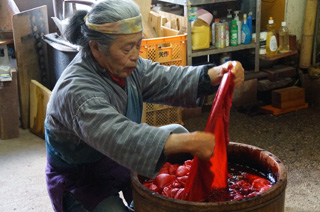
No end to dyeing
Still, the textile dyed by “benimochi” is more brilliant than items dyed any other way. In addition, it has a subtle scent that makes you appreciate the quality. “You use good materials, put in the work you need to put in, and you get a good product.” Says Suzuki. As he taught himself how to dye with safflower, he made many discoveries. One of the major discoveries he made is that you get better colors when you combine natural things.
Another thing is being particular about water. Suzuki uses underground water from Mt. Chokai. The purity of the water stabilizes the output of the color. Another discovery was dyeing with chemicals such as acetic acid or citric acid can result in unevenness or discoloration.
So that got him thinking, and as he was eating some sweet pomelo, he accidentally hit upon a brilliant pink color. That gave him a hint, and now he uses a mixture of plum, sweet pomelo and apple juice for dyeing. “You know there is really no end to dyeing.” Suzuki, the veteran 70 plus year old craftsman laughed.
